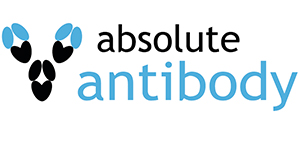Anti-Chronic lymphocytic leukemia (Lym-2)
Anti-Chronic lymphocytic leukemia [Lym-2], Recombinant, IgG kappa, Rabbit
SKU
ABAAb03690-23.0-BT
Packaging Unit
1 mg
Manufacturer
Absolute Antibody
Availability:
loading...
Price is loading...
CloneID: Lym-2
Antigen Long Description: The antibody was generated by immunizing BALB/c mice with chronic lymphocytic leukemia cell nuclei.
Buffer Composition: PBS only.
Specificity Statement: The antibody recognises a cell surface protein expressed in normal and malignant B lymphocytes.
Application Notes (Clone): Live cells radioimmunoassay techniques showed that the antibody bound to cell lines of B-cell lineage. B-cell specificity of the antibody was confirmed by immunofluorescence. Flow cytometric analysis of lymphoma biopsies showed the majority of B-cell tumors were detected by the antibody. Immunoperoxidase staining of frozen sections of human lymphoid tissues showed that the antibody stained germinal center and mantle zone B-lymphocytes as well as interfollicular histiocytes (Epstein et al. 1987; PMID: 3542194). Surface expression of the antigen recognized by the original version of the antibody was confirmed by flow cytometry in RL and DB, human diffuse large-cell lymphoma lines; TU-2C and CHIM-62, EBV-induced human B-cell lymphoma cell lines; Raji and Daudi, human Burkitt's lymphoma cell lines; and Michel and Karpas 299, ALCL cell lines. The effects of the antibody and the human-mouse chimeric of the antibody (chCLL-1) on the growth of various human lymphomas by using both in vitro and in vivo assays was evaluated. Cell lines derived from Burkitt's lymphomas, diffuse large cell B-cell lymphomas, anaplastic large-cell lymphomas, and Epstein-Barr virus–induced B-cell lymphomas were incubated with the original version of the antibody or chCLL-1 in vitro. Both versions of the antibody were capable of directly inhibiting the growth of various lymphoma lines in vitro. These human lymphomas were transferred into mice with severe combined immunodeficiency to evaluate the efficacy of the antibodies in vivo. Both the antibodies were effective in improving the survival of the mice (Funakoshi et al., 1997; PMID: 9376598). Antibody CAR T-cells for immunotherapy were constructed, which are highly cytotoxic to human lymphoma Raji cells (US20160355590A1).
Antigen Long Description: The antibody was generated by immunizing BALB/c mice with chronic lymphocytic leukemia cell nuclei.
Buffer Composition: PBS only.
Specificity Statement: The antibody recognises a cell surface protein expressed in normal and malignant B lymphocytes.
Application Notes (Clone): Live cells radioimmunoassay techniques showed that the antibody bound to cell lines of B-cell lineage. B-cell specificity of the antibody was confirmed by immunofluorescence. Flow cytometric analysis of lymphoma biopsies showed the majority of B-cell tumors were detected by the antibody. Immunoperoxidase staining of frozen sections of human lymphoid tissues showed that the antibody stained germinal center and mantle zone B-lymphocytes as well as interfollicular histiocytes (Epstein et al. 1987; PMID: 3542194). Surface expression of the antigen recognized by the original version of the antibody was confirmed by flow cytometry in RL and DB, human diffuse large-cell lymphoma lines; TU-2C and CHIM-62, EBV-induced human B-cell lymphoma cell lines; Raji and Daudi, human Burkitt's lymphoma cell lines; and Michel and Karpas 299, ALCL cell lines. The effects of the antibody and the human-mouse chimeric of the antibody (chCLL-1) on the growth of various human lymphomas by using both in vitro and in vivo assays was evaluated. Cell lines derived from Burkitt's lymphomas, diffuse large cell B-cell lymphomas, anaplastic large-cell lymphomas, and Epstein-Barr virus–induced B-cell lymphomas were incubated with the original version of the antibody or chCLL-1 in vitro. Both versions of the antibody were capable of directly inhibiting the growth of various lymphoma lines in vitro. These human lymphomas were transferred into mice with severe combined immunodeficiency to evaluate the efficacy of the antibodies in vivo. Both the antibodies were effective in improving the survival of the mice (Funakoshi et al., 1997; PMID: 9376598). Antibody CAR T-cells for immunotherapy were constructed, which are highly cytotoxic to human lymphoma Raji cells (US20160355590A1).
| SKU | ABAAb03690-23.0-BT |
|---|---|
| Manufacturer | Absolute Antibody |
| Manufacturer SKU | Ab03690-23.0-BT |
| Package Unit | 1 mg |
| Quantity Unit | STK |
| Reactivity | Human |
| Clonality | Recombinant |
| Application | Immunofluorescence, Flow Cytometry, Immunohistochemistry, In Vivo Assay |
| Isotype | IgG kappa |
| Host | Rabbit |
| Product information (PDF) | Download |
| MSDS (PDF) | Download |

 Deutsch
Deutsch







